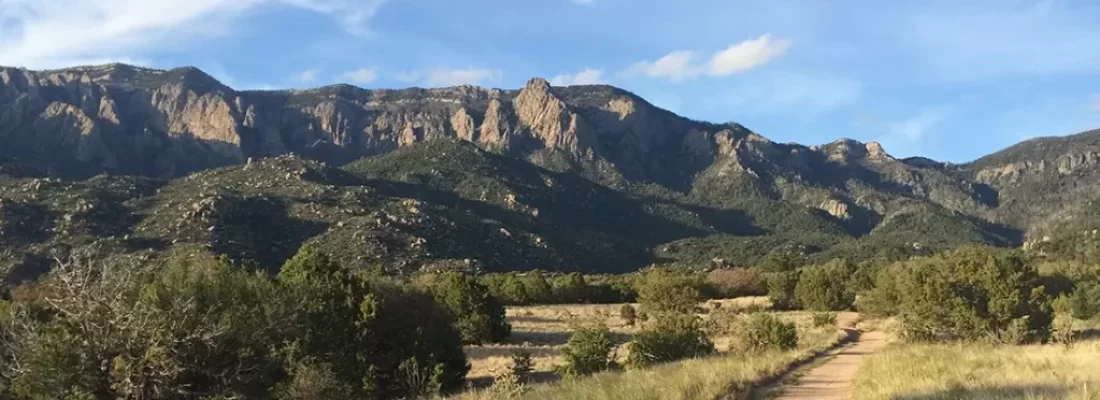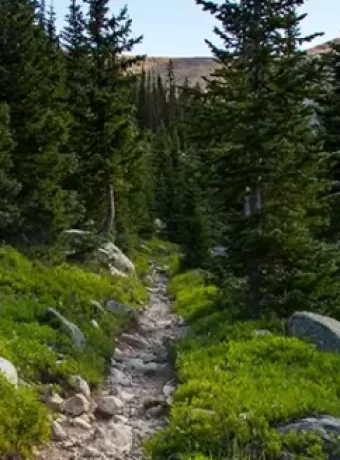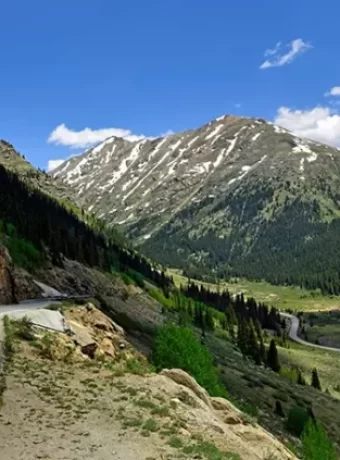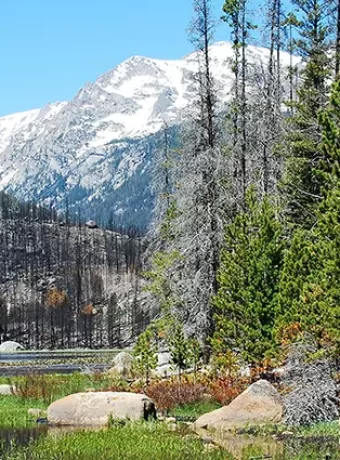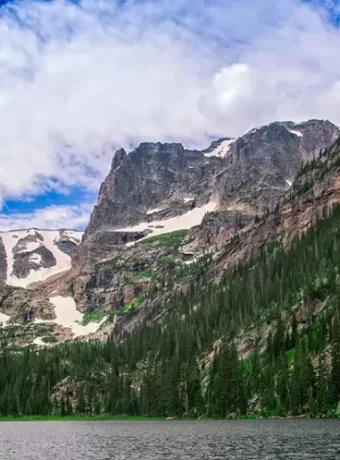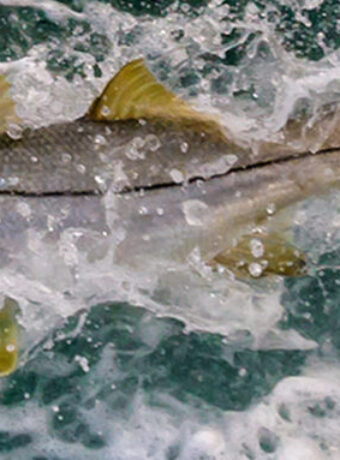Best Mountain Biking Trails in New Mexico
Mountain Biking New Mexico, the “Land of Enchantment,” offers incredible mountain biking experiences. From leisurely rides along the Rio Grande to challenging climbs with elevation gain in the Sandia Mountains, there’s a trail for every rider. This guide will help you find the perfect New Mexico mountain biking trail.
Table of Contents
Best Mountain Biking Trails in New Mexico: A Detailed Guide
For the Beginner:
If you’re new to mountain biking, the West Rim Trail near Taos is a great place to start. This mostly flat, 18-mile scenic trail offers stunning views of the Rio Grande Gorge.
The terrain is generally smooth, with some loose basalt rocks. Be sure to check trail reviews before heading out.
Outdoor Apparel Designed by those in the industry. Design group of hikers, fly fishers, backpacker, kayakers, and the list continues uses daily every Graphic Hoodie, Gloves, Leggings, and gear we sell.
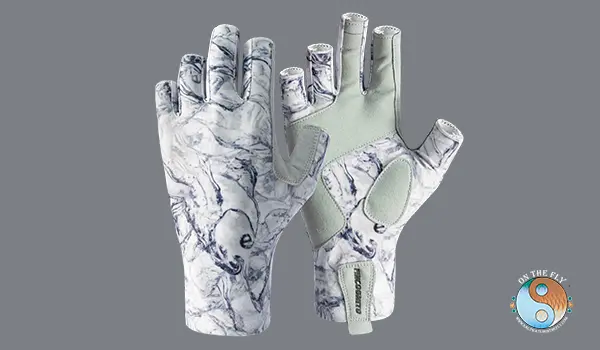
Graphic Mountain Biking Gloves
Mountain Biking Rio Mimbres Loop
The Rio Mimbres Loop is a fantastic ride near Silver City. This 22-mile loop is perfect for a day trip. It’s got some challenges, but the scenery makes it worthwhile.
This trail takes you through the Gila National Forest. You’ll see beautiful views of the Mimbres River valley. The trail follows the river for a good portion of the ride. The climb up to the Continental Divide Trail is a good workout. But the descent back down is a blast. This is one of the best mountain biking trails in New Mexico.
The loop begins with a gradual climb. This climb warms you up for the more challenging sections ahead. The trail is mostly smooth singletrack. But there are some rocky areas to keep things interesting. The middle section of the loop is where the real fun begins. The trail climbs steeply up to the Continental Divide. The views from the top are incredible.
From the top of the Continental Divide, the trail descends back down towards the river. This is a fast and fun section of trail. There are some technical sections. So, be sure to watch out for rocks and roots. The trail eventually levels out as you approach the river. You’ll follow the river back to the trailhead.
This loop has something for every rider. The climbs are challenging. But the descents are rewarding. And the scenery is top-notch. The Rio Mimbres Loop is one of the best mountain biking trails in New Mexico.
Mountain Biking Rift Valley Trail
New Mexico has awesome mountain biking trails. One stands out though. The Rift Valley Trail outside of Angel Fire. This 20-mile loop is a true test. It’s for Intermediate riders. But the views are amazing.
This trail starts near the Angel Fire Resort. You climb quickly. Get ready for some tough uphill sections. This trail has lots of rocks and roots. You’ll need good bike handling skills. A full-suspension mountain bike will help. The climbs are tough. But the downhills are super fun.
The high point of the trail is over 10,000 feet. The views are unreal. You’ll see the Moreno Valley spread out below. You’ll see the Sangre de Cristo Mountains. The trail winds through forests of aspen and pine. This adds to the beauty. But it also adds to the challenge.
The middle section of the trail is pretty exposed. Bring lots of water. Sunscreen is a must too. There is very little shade. This part of the trail is mostly above the treeline. It’s rocky and technical. Focus is key here.
The last part of the trail is mostly downhill. This is where you can let loose. Enjoy the flowy singletrack. The trail drops back into the trees. The last few miles are fast and fun.
The Rift Valley Trail is tough. It’s not for beginners. But it’s worth it. The scenery is awesome. This is some of the best mountain biking New Mexico offers. Just remember to check the trail conditions. Bring a map and GPS. Cell service is spotty.
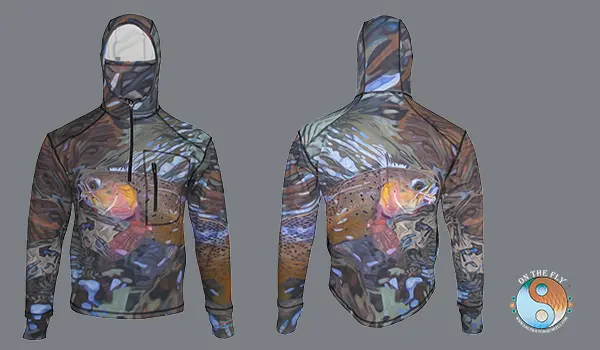
Cooler Mornings on the Trail a Hydrophoic Heavy Weight
Text content
Stepping It Up: Intermediate Trails
Ready for more of a challenge? The Grindstone Canyon Loop near Ruidoso is a 6.7-mile loop trail with diverse terrain and exciting downhill sections. Most of this canyon loop caters to mountain bikes.
The Dale Ball Trails North in Santa Fe is another great choice. This 4.2-mile loop trail offers beautiful views of the Sangre de Cristos mountains. It’s a shared trail for mountain bikers and hikers.
Mountain Biking Grindstone Canyon Loop
The Grindstone Canyon Loop near Silver City, New Mexico, is a fantastic ride. This loop is about seven miles long. It’s known for its fun, flowy singletrack. But don’t let that fool you. There are still some technical parts that will keep you on your toes.
This trail sits in the Gila National Forest. This area has tons of mountain biking trails. The Grindstone Canyon Loop is a local favorite. It’s a great option if you’re looking for a good workout. It also offers beautiful views.
The trail begins with a gradual climb. This climb warms up your legs. It also gets you ready for the fun descents to come. As you climb, you’ll pass through cool pine forests. You’ll see amazing rock formations. The Gila National Forest is beautiful.
Once you reach the top, get ready for some thrilling descents. The singletrack here flows really well. It’s fast and twisty. This is a blast on a mountain bike. There are a few rock gardens and root sections. These sections add some technical challenge. Advanced riders will enjoy the quick and fun ride. But newer riders can still handle the trail.
One of the best things about Grindstone Canyon is its scenery. As you ride, you’ll be treated to stunning views of the Gila Wilderness. You’ll see the Mogollon Mountains. This makes the ride even more enjoyable.
If you are planning to visit, keep a few things in mind. Bring lots of water. This is especially true during the warmer months. The trail can get pretty dry. It’s a good idea to have a map. A GPS device is also smart. Cell phone service can be spotty. This is common in the Gila National Forest. You’ll want to be prepared.
Mountain Biking La Luz Trail
Albuquerque’s La Luz Trail isn’t just for hikers. It’s a thrilling ride for experienced mountain bikers. But this isn’t a beginner’s trail. This 13.5-mile out-and-back climbs high into the Sandia Mountains. The trail gains over 4,000 feet in elevation. So, be ready for some serious work.
The views are amazing. You’ll see the city spread out below. You’ll also see stunning mountain scenery. The trail itself is rocky and technical. It demands focus and skill. A full-suspension mountain bike is a must. This is one of the best mountain biking trails in New Mexico. But it’s not for the faint of heart.
The first few miles are a steady climb. The trail winds through forests of pine and aspen. This section can be pretty smooth. But there are still some rocky sections to keep you on your toes. As you climb higher, the trail gets steeper. The terrain becomes more challenging.
The middle section of La Luz is where the real fun begins (or the real suffering, depending on your perspective). Get ready for steep, rocky climbs. You’ll also encounter some technical descents. This part of the trail tests your skills and endurance. But the views from the top are incredible.
The descent is fast and exhilarating. It’s a chance to let loose and enjoy the flow. But stay alert. The trail is still technical. There are plenty of rocks and roots to watch out for. A good set of brakes and solid bike-handling skills are essential. Make sure to bring plenty of water. This trail is a workout. Pack some snacks, too. You’ll need the energy.
The La Luz Trail is a true test of mountain biking ability. It offers stunning views and a thrilling ride. If you’re up for the challenge, it’s an unforgettable experience. This trail showcases some of New Mexico’s best mountain biking.
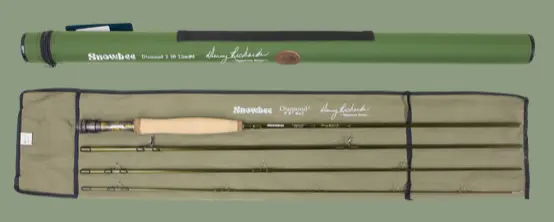
Nine Foot, Six Weight Fly Rod
Mountain biking New Mexico pass along some great New Mexico fly fishing destinations.
Mountain Biking the Continental Divide Trail Through New Mexico
The Continental Divide Trail (CDT) is one of the most iconic long-distance trails in the United States, stretching over 3,100 miles from Mexico to Canada along the Continental Divide of the Americas. For mountain bikers seeking a unique and challenging adventure, the New Mexico section of the CDT—spanning approximately 700 miles—offers a diverse and stunning landscape to explore. From the sun-scorched deserts of the southern bootheel to the alpine forests of the Gila National Forest, riding the CDT through New Mexico is an unparalleled experience that tests endurance, skill, and self-reliance.
In this article, we’ll dive into what makes the New Mexico section of the CDT so special, break down its key segments, and provide practical tips to help you plan your own mountain biking journey on this legendary trail. Learn more about hiking the CDT.
The Appeal of Mountain Biking the CDT in New Mexico
What makes the New Mexico section of the CDT stand out as a mountain biking destination? It’s a combination of diverse terrain, profound solitude, rich history, and sheer challenge.
Unmatched Landscape Diversity
The New Mexico CDT takes riders through an astonishing variety of environments. One moment you’re pedaling across high desert plateaus dotted with cacti, and the next you’re climbing rugged mountain passes or descending into lush river valleys. This diversity keeps every mile visually spectacular and technically engaging.
Solitude and Remoteness
In an era of constant connectivity, the CDT offers a rare escape. Long stretches between towns, limited cell service, and days without encountering another soul create a sense of solitude that’s hard to find elsewhere. It’s just you, your bike, and the vast New Mexico wilderness.
A Journey Through History
The trail winds through lands steeped in cultural significance. Riders pass near ancient Puebloan ruins, Spanish colonial sites, and historic mining towns, offering opportunities to step off the bike and explore the rich history of Native American, Spanish, and Anglo influences in the region.
The Ultimate Challenge
This is not a trail for beginners. Steep climbs, technical descents, and long days in the saddle demand physical and mental toughness. Yet, for those who rise to the occasion, the sense of accomplishment is immense—making the CDT a bucket-list adventure for seasoned mountain bikers.
Overview of the Trail
The New Mexico section of the CDT can be divided into four distinct segments, each with its own character, highlights, and challenges.
1. The Bootheel
- Location: Begins at the Mexican border in New Mexico’s southwest corner.
- Terrain: Arid desert landscapes and remote trails.
- Challenges: Relatively flat compared to later sections, but water and services are scarce, requiring careful planning.
- Highlights: The stark beauty of the desert and the thrill of starting at the trail’s southern terminus.
2. The Gila National Forest
- Location: Central-western New Mexico.
- Terrain: Mountainous with dense forests and rocky trails.
- Challenges: Steeper climbs and technical descents emerge here.
- Highlights: The Gila Wilderness (Mountain Bikes are not allowed in Wilderness Areas) You will have to use an Alternate Trail for this section, the first designated wilderness area in the U.S., offers pristine landscapes and a true backcountry experience.
3. The San Pedro Parks Wilderness
- Location: North-central New Mexico.
- Terrain: High-elevation meadows and alpine lakes.
- Challenges: Higher altitudes bring cooler weather and more elevation gain.
- Highlights: A refreshing contrast to the southern deserts, with expansive views and serene natural beauty.
4. The Carson National Forest
- Location: Northern New Mexico, nearing the Colorado border.
- Terrain: Towering peaks and deep canyons.
- Challenges: Some of the steepest climbs and most technical descents on the trail.
- Highlights: Dramatic scenery and the satisfaction of conquering the final leg of the New Mexico section.
The trail’s conditions vary widely—from smooth singletrack to rocky jeep roads—and it’s not always well-marked. Strong navigation skills are a must.
Planning Your Trip
Mountain biking the CDT in New Mexico is a serious undertaking that requires meticulous preparation. Here’s what you need to know:
Timing
- Best Seasons: Spring (April-May) or fall (September-October) offer milder temperatures and better trail conditions. Summer brings intense heat, especially in the south, while winter can blanket higher elevations in snow.
- Avoid: Mid-summer in the desert and winter in the mountains unless you’re prepared for extremes.
Gear
- Bike: A durable mountain bike with good suspension is essential for the rough, rocky terrain.
- Repair Kit: Carry extra tubes, a pump, a multi-tool, and a chain breaker for inevitable mechanical issues.
- Camping: Pack a lightweight tent, sleeping bag, and cooking gear—most nights will be spent under the stars.
Water and Resupply
- Water: Sources are scarce, particularly in the bootheel. Plan water carries carefully and know the locations of reliable springs or caches.
- Resupply Points: Towns like Silver City, Grants, and Cuba are key stops for food and supplies. Silver City, in particular, is a charming hub with a rich biking culture.
Navigation
- Tools: A GPS device or detailed topographic maps are critical, as the trail can be faint, overgrown, or poorly signed in spots.
- Skills: Be ready for route-finding challenges and have a backup plan if you lose the path.
Physical Preparation
- Training: Long days and significant elevation changes demand strong fitness. Prior experience with bikepacking or multi-day rides is highly recommended.
- Mindset: Mental resilience is key for handling the isolation and physical demands.
On the Trail
The CDT in New Mexico delivers moments of awe, challenge, and connection that define the adventure.
Picture this: You’re riding through the Gila Wilderness, cresting a ridge after a grueling climb. Suddenly, a panoramic view of untouched mountains unfolds before you—no roads, no buildings, just nature in its rawest form. It’s humbling and exhilarating, a reminder of why you took on this journey.
Then there’s the camaraderie. Though the trail is remote, chance encounters with hikers or fellow bikers spark instant bonds. Over a campfire near Silver City, I once swapped stories with a CDT hiker who’d been on the trail for months—his tales of perseverance fueling my own resolve.
The lows are real too. I recall pushing my bike up a steep, rocky incline in the Carson National Forest, sweat stinging my eyes, wondering why I’d signed up for this. But reaching the top and looking back at the conquered terrain turned exhaustion into triumph.
These highs and lows weave together to create an experience that’s as rewarding as it is demanding.
Conclusion
As I pedaled out of New Mexico and into Colorado, I felt a profound mix of accomplishment and gratitude. The CDT had tested my limits, but it had also revealed the stunning beauty and resilience of the New Mexico wilderness. For experienced mountain bikers craving a true adventure, the CDT through New Mexico is a challenge worth embracing.
It’s not just a ride—it’s a journey through diverse landscapes, rich history, and personal growth. With careful planning, the right gear, and a willingness to push yourself, you’ll find that the rewards far outweigh the hardships. Respect the trail, savor the solitude, and let the CDT leave its mark on you as you leave yours on it.
Advanced & Expert Riders: Embrace the Thrill
Experienced riders will love the South Boundary Trail #164 near Taos. This challenging 22-mile trail, part of the larger South Boundary Trail, takes you through forests, meadows, and rocky outcroppings.
Be prepared for steep climbs, technical descents, and incredible scenery. The South Boundary Trail offers sweeping views for outdoor enthusiasts. At nearly 50 miles with substantial elevation change, it’s suited for expert mountain bikers.
Mountain Biking South Boundary Trail #164
The South Boundary Trail #164, near Taos, New Mexico, is a 22-mile out-and-back adventure. It’s a favorite among mountain bikers in New Mexico. This trail is known as one of the most challenging. But it’s also super rewarding.
This Carson National Forest trail is rugged and scenic. It takes you through forests, meadows, and rocky areas. The trail starts at 8,500 feet. It climbs to over 10,000 feet. You’ll see awesome views of the mountains and the Rio Grande Valley.
This trail has some tough parts. There are steep climbs, some lasting two miles! It also has technical descents. You’ll find rocky terrain, tight switchbacks, and steep drop-offs. But there are also smooth singletrack sections. These let you enjoy the scenery.
Here’s what you should know:
- Elevation Gain: It’s a big one, about 2,500 feet.
- Terrain: Rocky, technical, steep sometimes, but also smooth and flowy.
- Trail Surface: Mostly dirt and rock.
- Obstacles: Watch out for rocks, roots, and those drop-offs.
- Closures: Weather can close the trail. Check with Carson National Forest before you go.
This is for advanced mountain bikers. You need to be in good shape for this one. A full-suspension mountain bike is best. Make sure it has sturdy tires and a dropper post. Bring lots of water and snacks. There isn’t much out there. A map and GPS are important because cell service can be spotty.
You can find the trailhead at the South Boundary Campground. It’s off NM-38. The campground has parking. But make sure you follow the rules and pay the fees.
You don’t need permits for this trail. But you do need to follow the Carson National Forest rules. Be safe, respect the environment, and have fun!
Exploring Albuquerque: City and Mountain Views
Albuquerque offers many great trails. The Paseo del Bosque Trail is a 16-mile paved path following the Rio Grande. It’s surprisingly covered with vegetation.
The nearby Rio Grande Nature Center State Park provides information about the region’s ecology. It’s a good place to visit for more insights into the Rio Grande.
For a more strenuous ride, the La Luz Trail takes you 13.5 miles high into the Sandia Mountains.
Be ready for intense uphill sections. The panoramic vistas from this mountain trail are worth the effort. From the Sandia foothills, you’ll find a good trailhead.
A Scenic Ride in Santa Fe
Santa Fe has several mountain biking options, including the Santa Fe Rail Trail. This trail blends urban and natural settings, with the first four miles starting from downtown Santa Fe being paved.
The scenery changes dramatically over the next thirteen miles, offering rugged vistas. You’ll encounter juniper, yucca, and piñon as the trail climbs.
The paved Arroyo de los Chamisos Trail near the Santa Fe Place Mall offers around 4 miles of easy urban riding.
This trail winds through neighborhoods and parks, perfect for a leisurely ride.
Southern New Mexico: Desert Landscapes
In southern New Mexico, the La Llorona Multi-Use Path in Las Cruces offers a unique experience next to the Rio Grande.
The smooth 4-mile route has several stops, including a playground and a free railroad museum in a historic depot. Las Cruces has more than just the La Llorona path.
Trail Tips and Resources
- Check Trail Conditions: Trails can sometimes be inaccessible or undergo maintenance. Confirm conditions with Carson National Forest, call 800-633-7463, or check websites like the New Mexico Tourism site for closures and parking regulations.
- Pack Essentials: Riding conditions can change rapidly, so bring water, food, layers, and emergency gear. Trails like South Boundary Trail, which stretches almost 50 miles through Lincoln National Forest and offers challenging climbs up Devisadero Peak, may even take several days, so it’s wise to pack plenty of essentials, which might include checking current weather forecasts for potential cold and heat fluctuations in high elevation environments such as Carson and Lincoln National Forests.
- Respect the Environment: Pack out everything you pack in and keep the trails clean. Be considerate of hikers and equestrians. Respect the ponderosa pine forests.
FAQs about Best Mountain Biking Trails in New Mexico
Does New Mexico have good mountain biking?
Yes, New Mexico offers many trails for all levels, from beginners to experts.
The varied landscapes, from deserts to mountains, provide amazing rides. Plus, there are lots of local bike shops and businesses ready to help you out.
Which state has the best mountain biking trails?
Choosing the “best” state is subjective. Each state offers something different.
Even within New Mexico, trail experiences can vary drastically. However, New Mexico is known as a top mountain biking destination due to its diverse landscapes and trail selection.
What is the most famous mountain bike trail?
The “most famous” trail depends on the rider’s preferences and their local terrain, but Slickrock Trail in Moab, Utah, is a strong contender.
Riders also favor Whistler Mountain Bike Park in Canada and Portillo, Chile, after the snow recedes. Many bike parks cater to specific types of riders.
What is the mountain biking capital of the world?
Bentonville, Arkansas, is a widely recognized mountain biking hotspot with its many developed paths. However, there are numerous mountain bike destinations each suited to different riders, their capabilities and local environments.
Conclusion of Mountain Biking New Mexico
New Mexico offers many mountain biking opportunities. From smooth paths for beginners to technical trails for experts, this state has something for every rider.
The diverse terrain, from the high-elevation forests to the desert landscapes, offers many incredible views. The trails of New Mexico offer mountain bikers everything from challenging climbs and scenic routes to technical descents.
Explore Lincoln National Forest with trails like the South Boundary Trail #164 and enjoy sweeping views from Devisadero Peak, or experience the easier riding on Atalaya Mountain Trail with great views and elevation gain for all skill levels.
